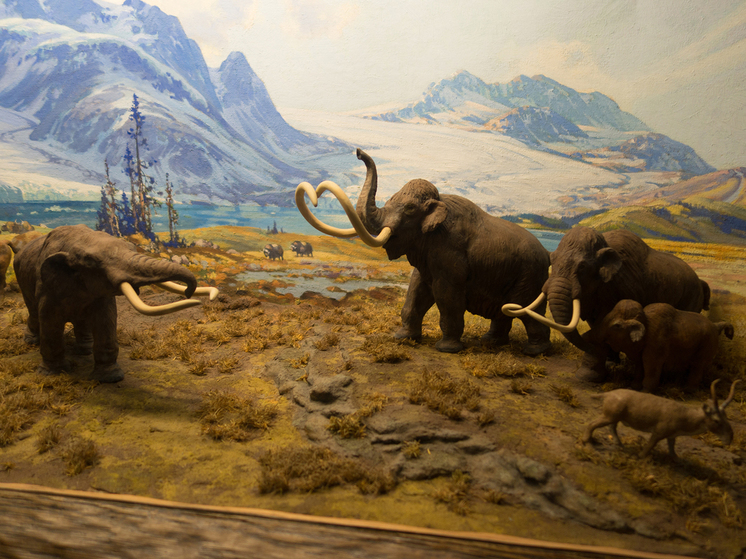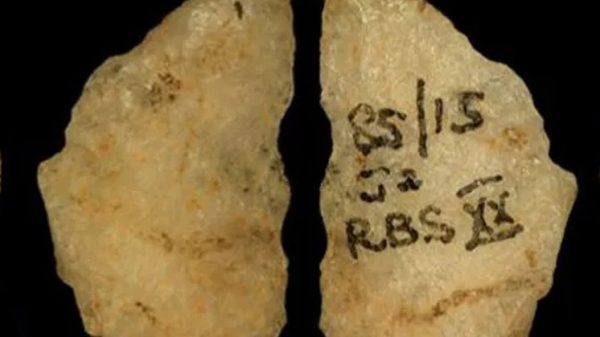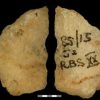The discovery has revolutionized scientists' understanding of the relationship between ancient people and woolly giants
An ancient tusk provides clues to the relationship between ancient Alaskans and woolly mammoths. Early human settlements in what is now Alaska were closely linked to the movements of a female woolly mammoth that lived 14,000 years ago, according to a new study. During its life, the animal traveled about 1,000 kilometers from northwestern Canada to the interior of Alaska.

The discovery, notes CNN, sheds light on the relationship between prehistoric giants and some of the first humans to cross the Bering Land Land Land, suggesting that humans set up their seasonal hunting camps where woolly mammoths were known to congregate.
Researchers in the United States and Canada have linked the two species thanks to a new isotope analysis tool, an ancient tusk and a map of archaeological sites in Alaska. The tusk belonged to a woolly mammoth, later named Elmayuuyeyeh or Elma for short. The specimen was discovered in 2009 at the Swan Point archaeological site in central Alaska.
According to the study's lead author Audrey Rowe, a doctoral student at the University of Alaska Fairbanks, the research began after the advent of the “cutting edge” a high-precision instrument at the Stable Isotope Laboratory in Alaska that breaks down samples to analyze strontium isotopes — chemical traces that reveal details of an animal's life.
Rowe's adviser, Matthew Wooller, used the same method to determine the movements of an adult male mammoth in article published in August 2021. Wooller is the study's senior author, a professor at the university's College of Fisheries and Ocean Sciences and director of the isotope center.
Strontium is a stable isotope formed when the mineral rubidium, an extremely reactive metal, breaks down. According to Rowe, it is a slow process with a half-life of 4 billion years. When rubidium decays, it first turns into radiogenic strontium-87, and many years later into stable strontium-86.
Where mammoths roamed, rocks turned into soil, plants grew, animals ate those plants, and their tusks showed the level of strontium in their diet in each layer of ivory.
The woolly mammoth's tusks grew at a constant daily rate, with the earliest days of the animal's life recorded at the tips of the tusks. The layers are clearly visible when a tusk sample is split lengthwise.
This analysis can then be traced back to the mineral and strontium content of rocks around Alaska to map where Elma roamed.
«The USGS has done a damn good job of mapping the rocks in Alaska,» says Audrey Rowe.
Woller then suggested that the team overlay the location of local archaeological sites on top of Elma's movements.
“And lo and behold,” says Rowe, “we had a lot of overlap between the densest area of late Pleistocene archaeological excavation in Alaska, right on top of the areas that Elma, our mammoth, used during her life.”
New isotopic The data combines datasets derived from radiocarbon dating and DNA analysis of two related juvenile mammoths also found at Swan Point to create a more complete picture of life 14,000 years ago.
“She was a young female in the prime of her life. Her isotopes showed that she did not suffer from malnutrition and that she died during the same season as the seasonal hunting camp at Swan Point where her tusk was found,” Wooller said in a statement.
Other researchers agreed. «This study greatly expands our understanding of mammoth behavior and also provides interesting clues about interactions between humans and mammoths,» said Lav Dahlen, professor of evolutionary genomics at the Center for Paleogenetics in Stockholm, Sweden.
These discoveries also may encourage more scientists to seek new combinations of research tools to improve their understanding of science and history.
“Overall, I think this paper is a fantastic example of how using a combination of different molecular tools such as isotopic, DNA and radiocarbon analyses, can provide innovative insights into prehistory,” notes Professor Dahlen.
The findings were published Wednesday in the journal Science Advances.
The new findings contribute to more than just understanding the early relationships between woolly mammoths and humans.
“Elma wandered through the archaeological site's most populated area in Alaska,” Rowe said in a statement. – It appears that these ancient people established hunting camps in areas that were frequented by mammoths.
The study also upended what Rowe believes should be the image that comes to mind when you think about each species independently.
The research team commissioned natural history illustrator Julius Csotonyi to create a digital image these two types. The final image shows all three woolly mammoths found at Swan Point, but instead of depicting the humans as aggressive hunters surrounding their prey, Audrey Rowe insisted that the artist depict a family.
“These humans were the same as us, but we only see aggressive periods of hunting in their lives,” she said. Hunter-gatherers had to use “sophisticated” technology to kill mammals in order to survive, ”and that really required a lot of skill“.
Rowe wants the picture of a woman, a man and children watching mammoths to demonstrate that “these people spent a lot of time teaching their children how to do everything.


























































Свежие комментарии